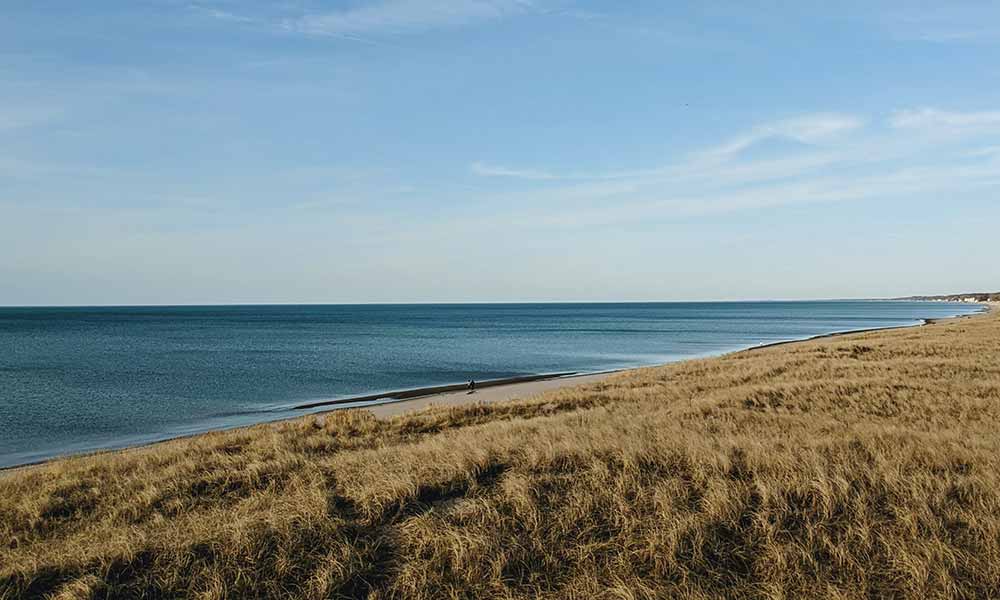Often referred to as the “third coast”, the Great Lakes offer a wealth of opportunities for adventurous surfers. But which of these lakes has the biggest waves and the best surf?
Can You Surf The Great Lakes?
Yes, you can surf the Great Lakes, and if you want to experience all that the US has to offer as a surfer, you definitely should!
There are reports of surfers riding waves in the Great Lakes as far back as the 1940s, and the lake surfing community has been growing ever since.
The Great Lakes don’t generate any groundswells, but they do produce some excellent waves.
Surfing the Great Lakes vs Ocean Waves
Great Lakes waves can be challenging, and this is heightened by the lack of buoyancy caused by the freshwater.
The conditions are also tough.
To accommodate these challenges, lake surfers usually choose larger and wider boards. The added volume provides more buoyancy when freshwater surfing, giving you extra control and stability on the waves.
You should also purchase a full wetsuit, as onshore winds and cold temperatures produce freezing conditions.
Do Any Of The Great Lakes Have Waves?
The biggest waves follow powerful storms, so if you want the best surfing experience, wait for those storms to hit.
You’ll typically only have a few days to act before those big waves fade away. Local surfers typically flood to their favorite surf spots following big storms, but they’re not necessarily crowded and there is plenty of space for everyone.
When is the Best Time to Surf the Great Lakes?
You should hit up the Great Lakes region during the fall or winter. It’s cold. It’s challenging. You’ll also need your thickest wetsuit and accessories. But this is when you’ll encounter the biggest waves.
If you’re new to lake surfing, try Great Lakes surfing during the early spring or late summer. The waves aren’t as strong, but the weather is more inviting.
Great Lake surfing is not for the faint of height.
What Are the Risks of Great Lakes Surfing?
You don’t have to worry about sharks when you surf the Great Lakes, and there is no saltwater to damage your board or wetsuit, either.
But it’s far from an easy and risk-free experience. The freezing conditions create a real and ever-present risk of hypothermia, and you’ll need to look out for piers, jetties, rocky bottoms, and rip currents.
Which Great Lake Has The Best Surf?
There are big waves in all of the five lakes, but Lake Erie, Lake Superior, and Lake Ontario may provide the biggest and best lake waves.
These lakes are oriented the same as most storms thanks to the polar jet stream. This means that winds blow across the surface of the lakes for longer distances, creating bigger swells and giving you more to play with.
If we had to choose one of these, we’d pick Lake Superior. Not only has it produced a number of record-breaking waves in the past, but it’s also home to Stoney Point, one of the most surfed spots in all of the Great Lakes.
Surfing Lake Superior
Lake Superior is the largest of the great lakes. It is also the coldest and deepest and produces some of the biggest waves. Lake surfers spend more time here than in any of the other Great Lakes, with Stoney Point being the most popular surf spot.
During the fall and winter, high winds kick up huge waves and produce perfect conditions for experienced lake surfers.
If you’re surfing here following a winter storm, expect subzero temperatures and waves that regularly crest at 10 to 20 feet.
In addition to Stoney Point, you’ll find great surf at Marquette Beach, Beaver Bay, The Zoo, and Grand Marais.
Surfing Lake Michigan
If you’re looking for some warm weather lake surfing, check out Lake Michigan, which offers some respectable swells during the final weeks of summer. As with Lake Superior, it’s also a good spot for surfing during the colder months.
Some of the best surf spots on Lake Michigan include Racine, Portage Lakefront, North Point, Wind Point, and Touhy Beach.
Surfing Lake Huron
If you’re surfing Lake Huron, check out Bay City, Georgian Bay, Port Huron, Lakeport, Lexington, and Port Austin, all of which offer some fantastic breaks for winter surfers.
Surfing Lake Erie
At Lake Erie, the waves have been known to reach 13 feet. The wind blows hard here and this produces some favorable surfing conditions.
The must-surf spots at Lake Erie include Sterling State Park, Point Abino, Luna Pier, Hamburg Beach, and Reebs Bay.
Surfing Lake Ontario
If you don’t have an issue with subzero temperatures, crunching your wetsuit booties over ice and snow on your way to the surf, then Lake Ontario could be a good fit.
The experience has been described as “exhilarating”, and it’ll certainly make you feel alive. Of course, to get to that point you’ll need to muster the courage to surf over freezing water in the dead of winter, and that’s easier said than done.
For the best waves in Lake Ontario, head to spots like Ashbridge’s Bay, Lakeside Park Beach, Frenchman’s Bay, Jack Darling Park, Scarborough Bluffs, the Niagara River Mouth, and Wolfe Island.
Which Great Lake Has Biggest Waves?
Lake Superior produces the biggest waves of all the Great Lakes. A few years ago, it documented a record-breaking wave of 29-feet and this was far from an isolated incident.
Summary: Surfing the Great Lakes
Great Lake surfing provides a big challenge for intermediate and advanced surfers. It could also serve as a big step up for beginners, though you may want to take a few lessons before you head out.
Companies like the Michigan-based Great Lakes Surf Shop offer lessons and equipment to adventurous surfers, and you should also check surf forecasts, pay attention to wind and water temperatures, and make sure you have all the equipment and accessories you will need.







